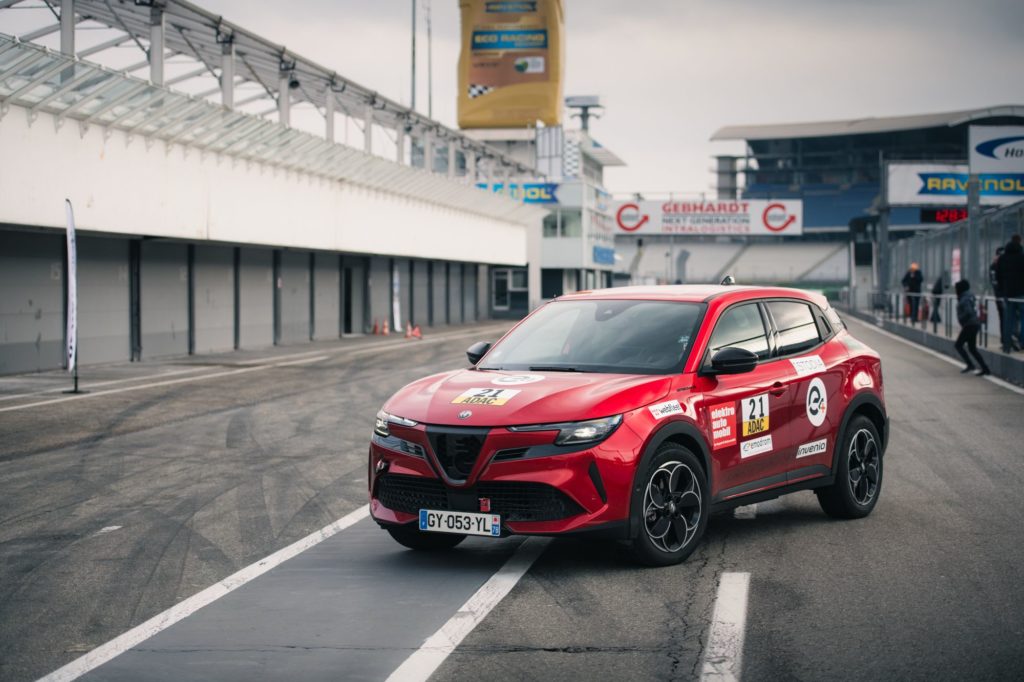
A few weeks ago, Alfa Romeo France contacted me to ask if I'd be interested in taking part in a 24-hour race at the legendary Hockenheim circuit in Germany. Of course, I said yes, and the race took place on February 15 and 16, 2025. For me, it was an opportunity not only to experience a 24-hour race, but also to test the 156hp electric version of the Junior under racing conditions. I also took the opportunity to compare it with the the 280hp electric version I tested on the Balocco circuitin Italy.
First of all, the competition is called the ADAC e-competition, a race organized every year by the ADAC since February 2022. ADAC is a powerful German automobile association with over 21 million members, whose mission is "to safeguard and promote the interests of motoring and motor sport". For the 2025 edition, no fewer than 31 cars were entered, with models including the Tesla Model 3, Kia EV3, Kia EV6, Renault 5, Skoda Elroq, Hyundai Ioniq, Volkswagen e-Golf, Lucid Air, Xpeng and even a retrofit Porsche 911. These cars were driven by drivers who were not taking part for the first time.
In short, a race organized in all seriousness, on a circuit that is emblematic of motor racing: the Hockenheimring, in GP configuration, just like in the Formula 1 era. Alfa Romeo France was the only foreign team to take part: Frenchmen, driving an Italian brand, on a German circuit! To win, of course, you have to be first (overall and/or in class), and that means find the right compromise between speed and fuel consumption.
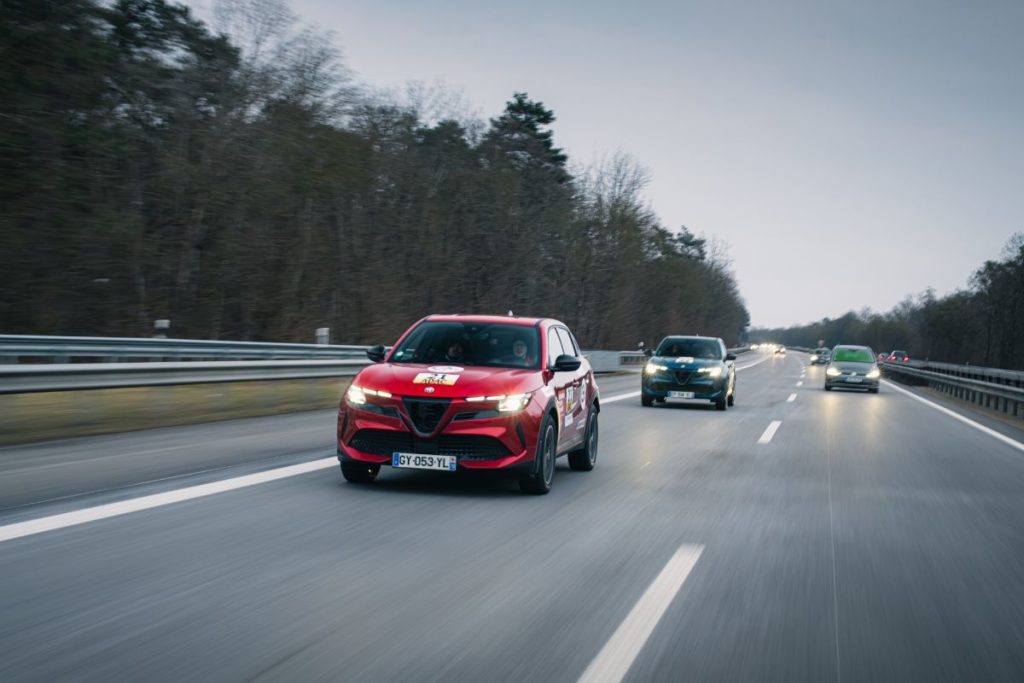
We set off from Paris with the two Alfa Romeo Juniors for Hockenheim, a journey of around 600 km, in temperatures ranging from 5°C to -1°C. Travelling at 120/130 km/h all the way, it took no less than three charges to arrive, or even four if you count the one at the start and consider that once there, the battery is almost empty and still needs recharging. Two of these charges were carried out on the freeway.
Consumption was around 20 kWh/100km, for a 51 kWh battery. Power output from the superchargers was around 105 kW, with stops of 20 to 30 minutes each. The first charge on the freeway took place during the lunch break, and the second allowed us to take a break after two hours on the road.
However, it should not be forgotten that four 30-minute recharges already represent a total of two hours of charging. It's therefore essential to plan ahead to limit the impact on your journey. By planning one charge before departure, two during the journey and one on arrival, you can "only" have to endure one hour of charging on the freeway (including half an hour during the lunch break). But yes, this requires more organization and patience than with a combustion-powered car, which does not require this type of planning.
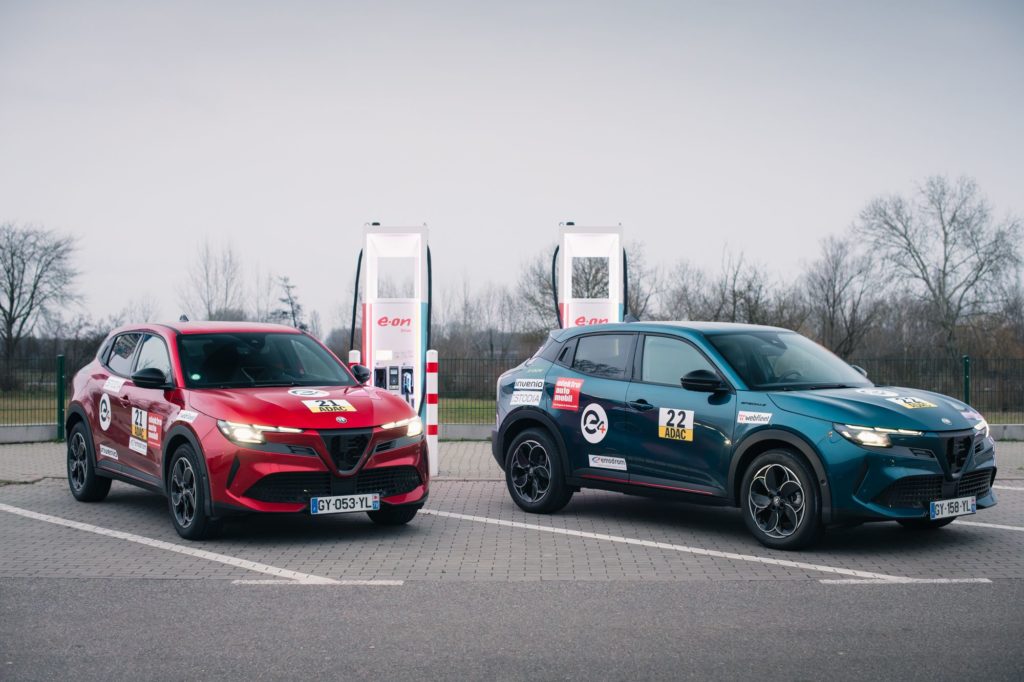
Once over the German border, we couldn't resist trying out the top speed of the Junior 156 hp: 151 km/h. Not enough to keep up with the Alfa Romeo 4C that overtook us on the German freeway. We arrived at Hockenheim on Friday evening, in temperatures of around 1°C, and stayed in a hotel just a few minutes from the circuit.
The next morning, the temperature was no higher and we head for the Hockenheimring. We arrive at the rear of the circuit and go straight into the paddock. It's not until I cross the paddock to the pit lane that I realize just how powerful this place is. It's impressive to see the immensity of the grandstands from the pits, and to be able to walk on the starting line which has hosted F1 and many other competitions. The ADAC e-competition may be a "small" race, but the location gives the event a very serious feel.
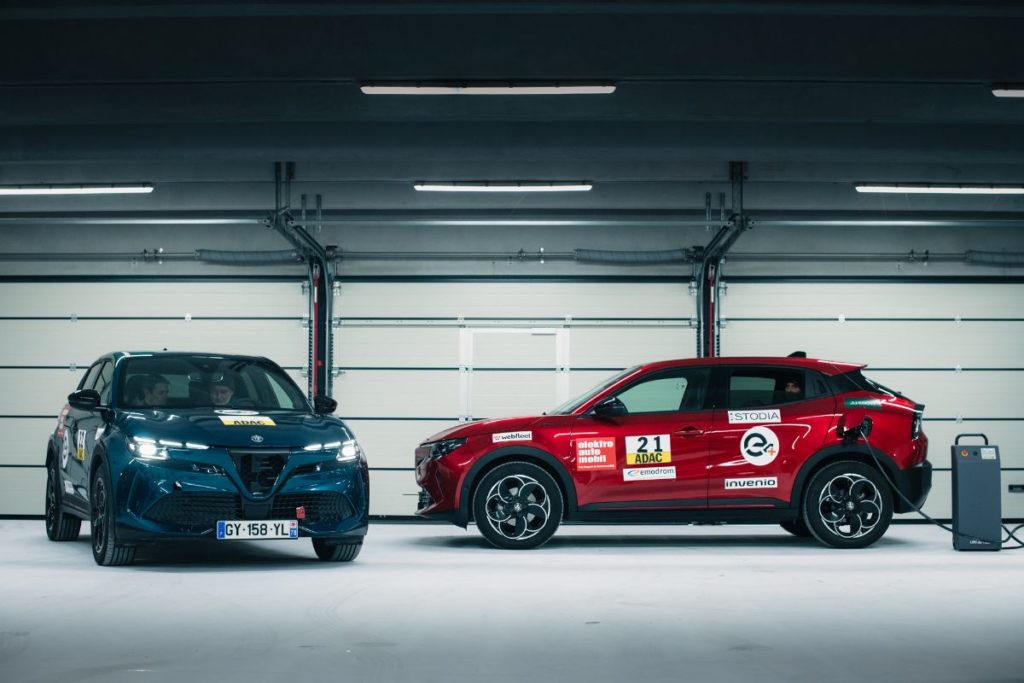
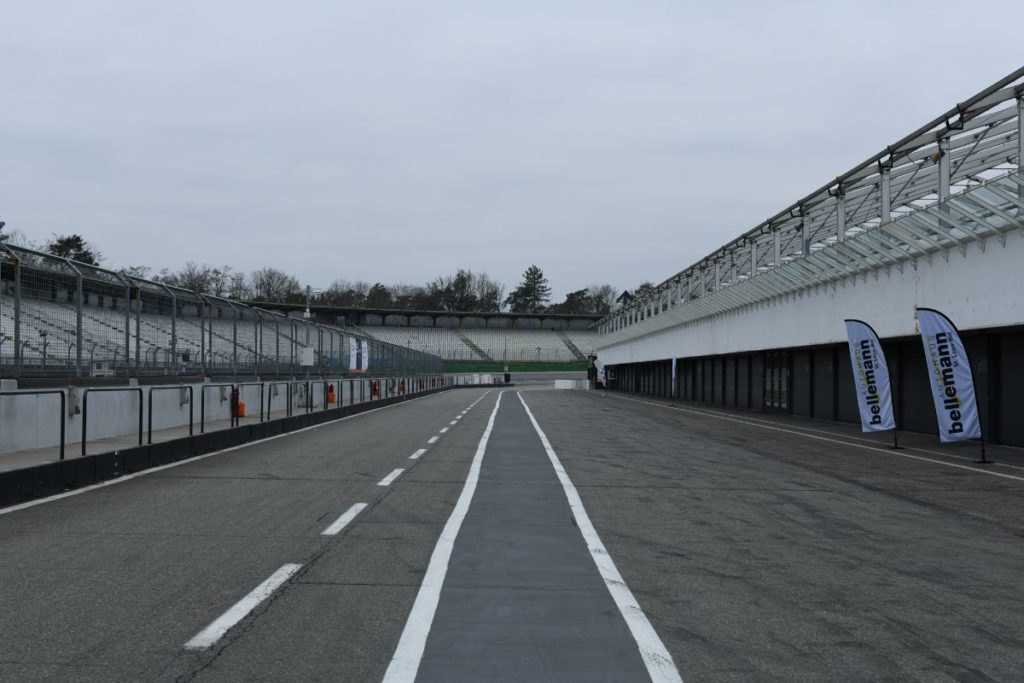
Saturday's schedule is as follows: track scouting with a few laps in the car, free practice to assess the best strategy, grid start at 3:30 p.m., followed by the start of the 24-hour race from 4 p.m. To avoid any problems - there are 31 cars on the starting grid, with amateur drivers - overtaking is forbidden on the first lap.
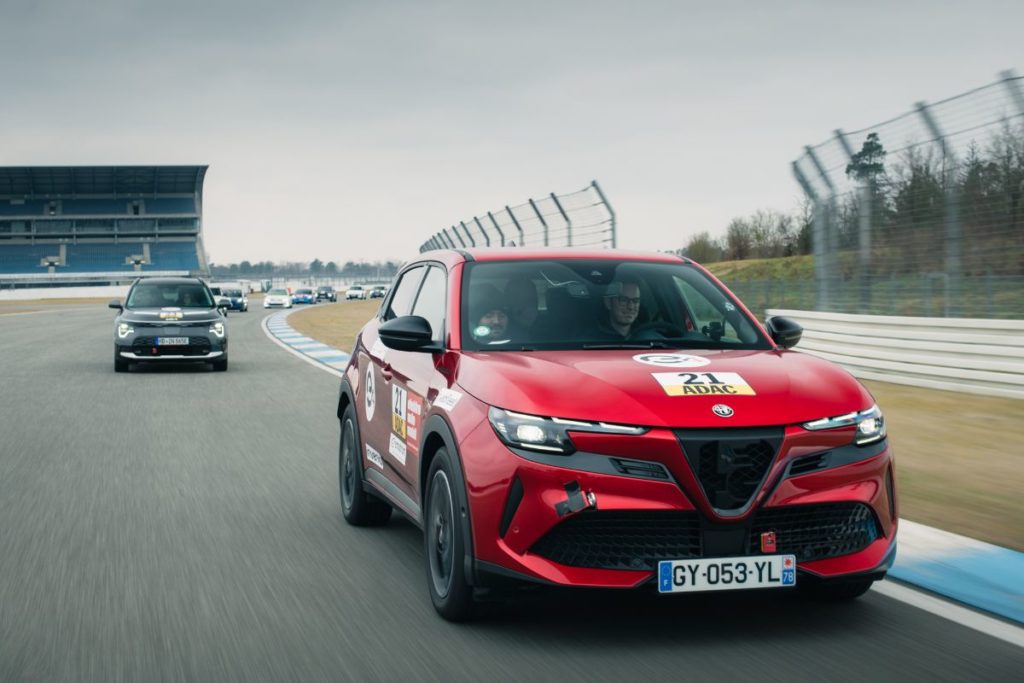
Concerning our two-car team (numbers 21 and 22), it was essential to adopt an offbeat strategy. The rule imposed a single charger for two cars, with a maximum output of 19 kW. We therefore decided to test two approaches: one with a target consumption of 18 kWh/100 km, and the other with 19 kWh/100 km. Thus, one car would go faster over 24 hours, but consume more, while the other would drive slightly slower but consume less. Note that with 19 kW power, it would take around an hour and a half to charge up to 90 %s.
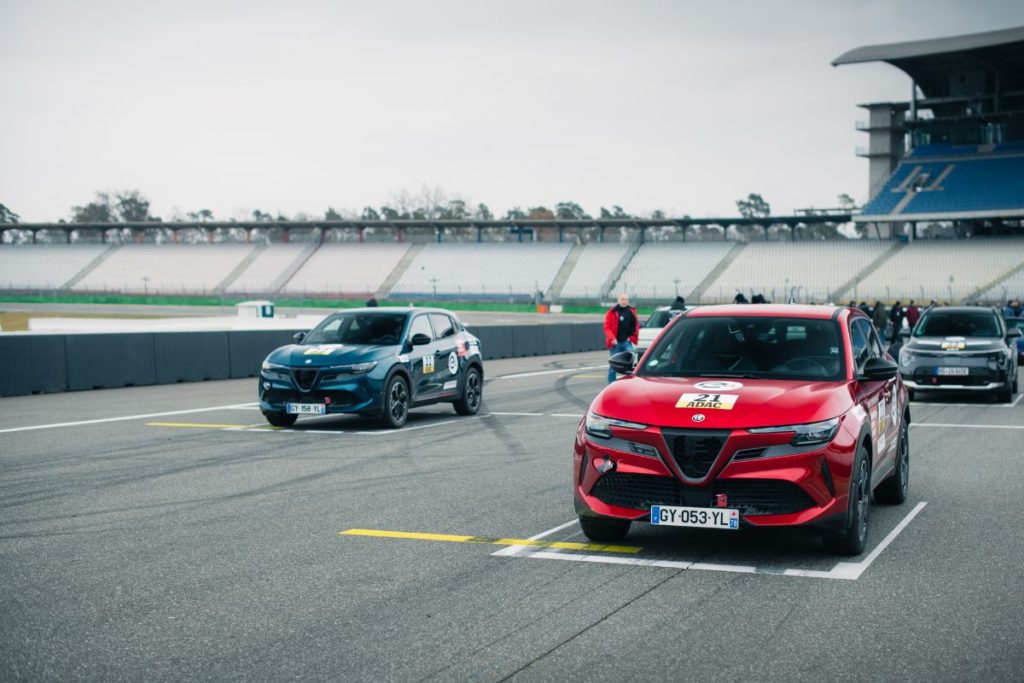
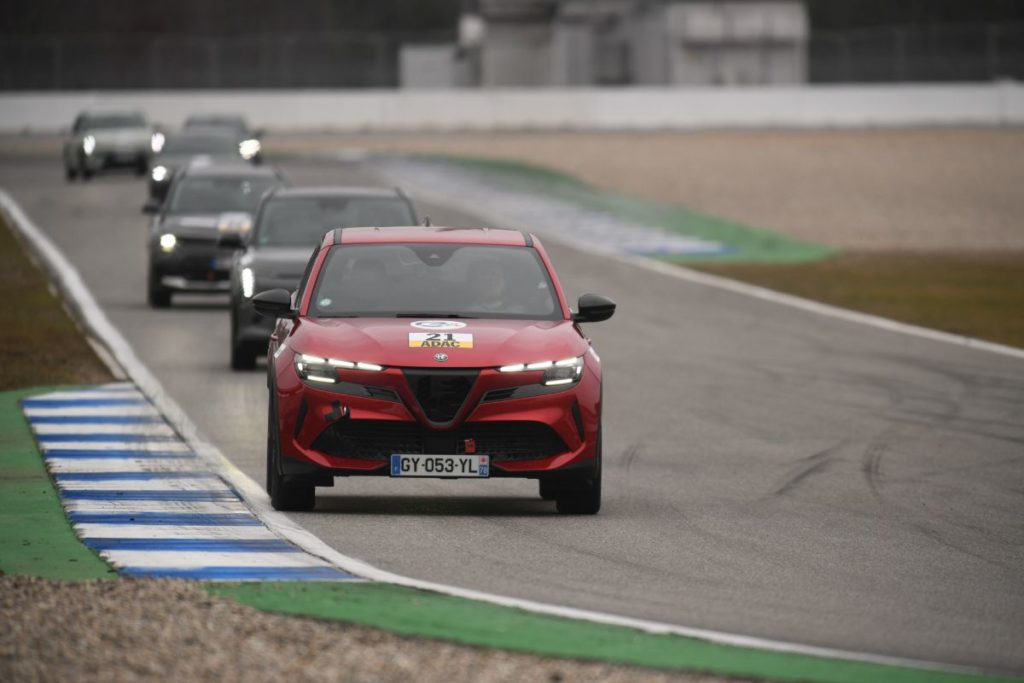
The start is at 4pm. The first lap went well, except that my car, number 21, overtook a few times during the first lap, earning us an eight-minute penalty. The regulations stipulate maximum stints of two hours. I was the second driver to take the wheel, at around 7:30 p.m. (two-hour stint + one-and-a-half-hour charge).
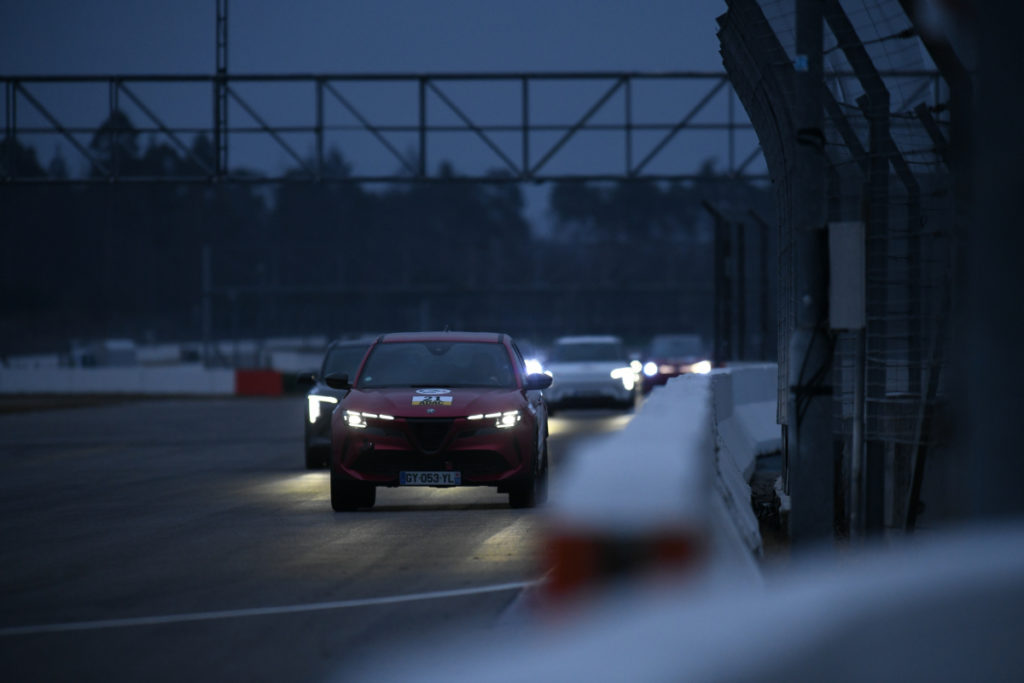
Here I am at night on the unlit Hockenheim circuit. I now understand what the drivers experience at the 24 Hours: the concentration required is intense. You see headlights far ahead, but also far behind. We overtake and are overtaken in the middle of the night, using only our low beams. At night, the sensation of speed is different.
It took me about 20 to 30 minutes of my two-hour ride to get my bearings. Those 20 to 30 minutes may seem long, but once I got the hang of it, the remaining hour and a half is a lot of fun.
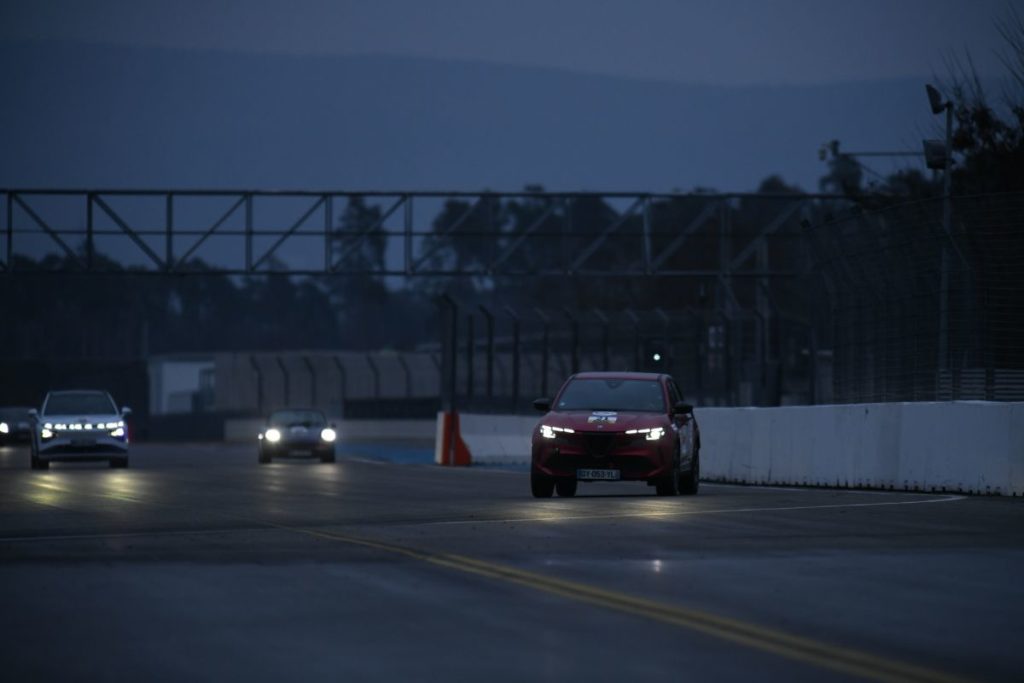
Now, we look for the best trajectory and the best time, while respecting a target fuel consumption. That means almost never braking! The challenge is to maintain a stable speed as far as possible, both in a straight line and when cornering. The Alfa Romeo Junior was therefore pushed to the limit by each driver... and it didn't disappoint.
All the team's drivers agreed that Junior is very good on the track. We all had the sensation of entering and exiting corners faster than the other cars. Straight-line speed didn't really matter, as everyone applied their own consumption strategy. On the other hand, the technical side of the Hockenheimring worked in our favour. It's true that driving through this technical sector several times in a video game can be tiring, but after a few laps behind the wheel of the Junior, it was a real pleasure every time!
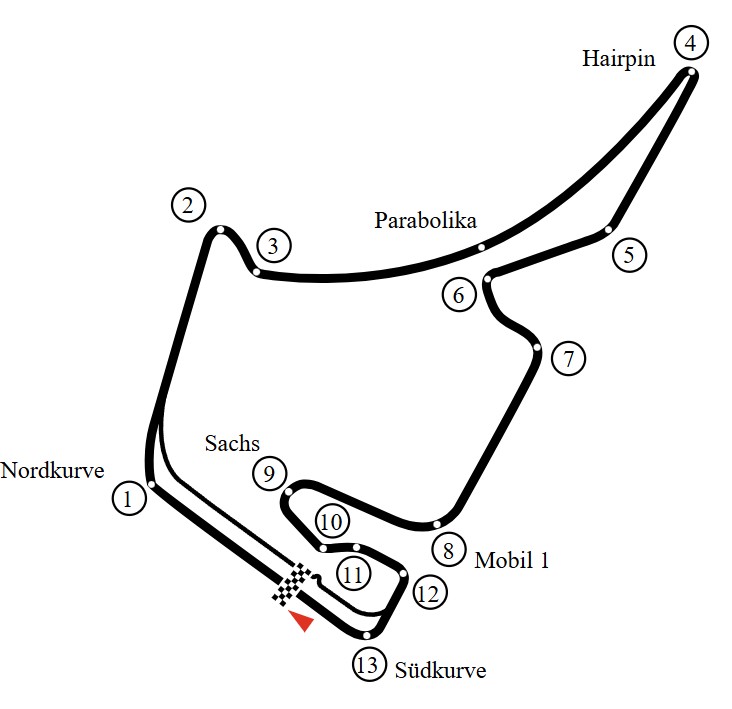
Lap after lap, I was looking for the best trajectory to tackle turn 6, then turn 9, with increasing speed. What fun! I'd arrive at 90 kph, lift off to enter at 80 kph, and exit at 70 kph. The Junior does very well in these conditions.
It was also in these moments that I was able to understand everything I needed to know. the interest of the Torsen differential, present on the 280hp version of the Junior, but absent on the 156hp. Whereas with the 280hp model, you can arrive very fast and still control the trajectory, with the 156hp without the Torsen differential, if you arrive too fast, you understeer and run off the track. I would have liked to have had the Torsen limited-slip differential on the 156 hp to compare my trajectories and lap times.
Of course, it could be argued that a Peugeot e-2008 or an Opel e-Corsa, which share the same eCMP platform, would have produced similar results. Perhaps, but in any case, thanks to its precise steering and chassis tuning, the Alfa Romeo Junior seemed superior to all its rivals on the technical side of the Hockenheimring.
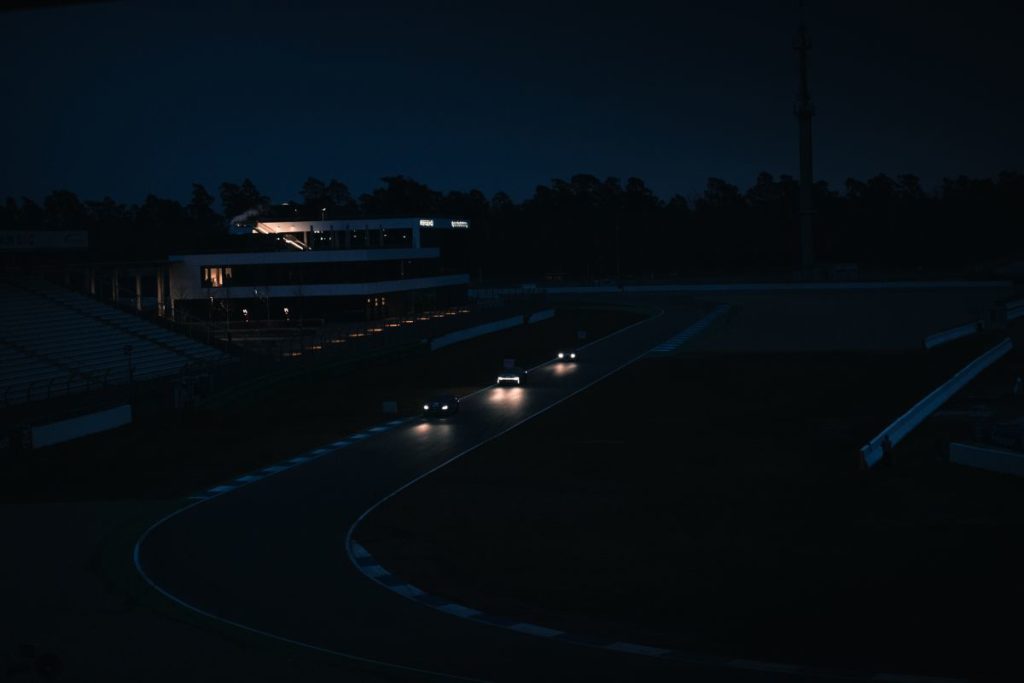
My relay ended around 9:30 pm. I then watched my two team-mates race well into the night, accompanied by German techno music in the lightly heated room where the lap times were displayed, and in temperatures that dropped to -1°C in our paddock.
Around 4 a.m, the other two team-mates, who had slept from 11 p.m. to 3.30 a.m., arrived to take over. After exchanging the necessary information for the rest of the race, we went to bed at around 5 a.m., before returning to the circuit at around 10 a.m.
Surprise! When I woke up, the snow was already well under way! The night team had to drive in the dark and powdery conditions. The vagaries of the weather!
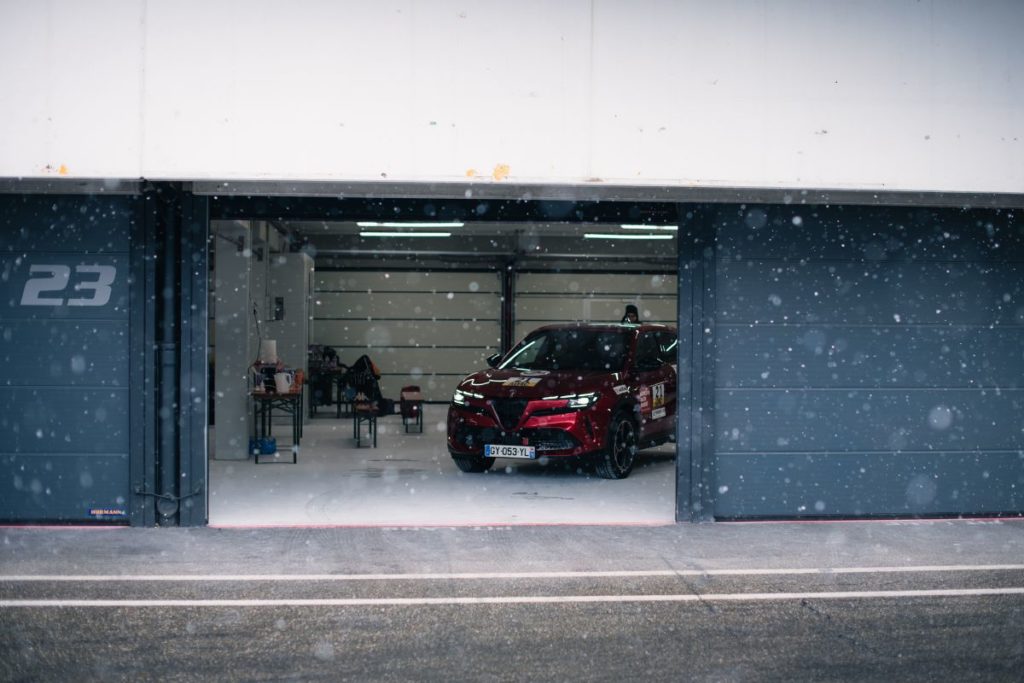
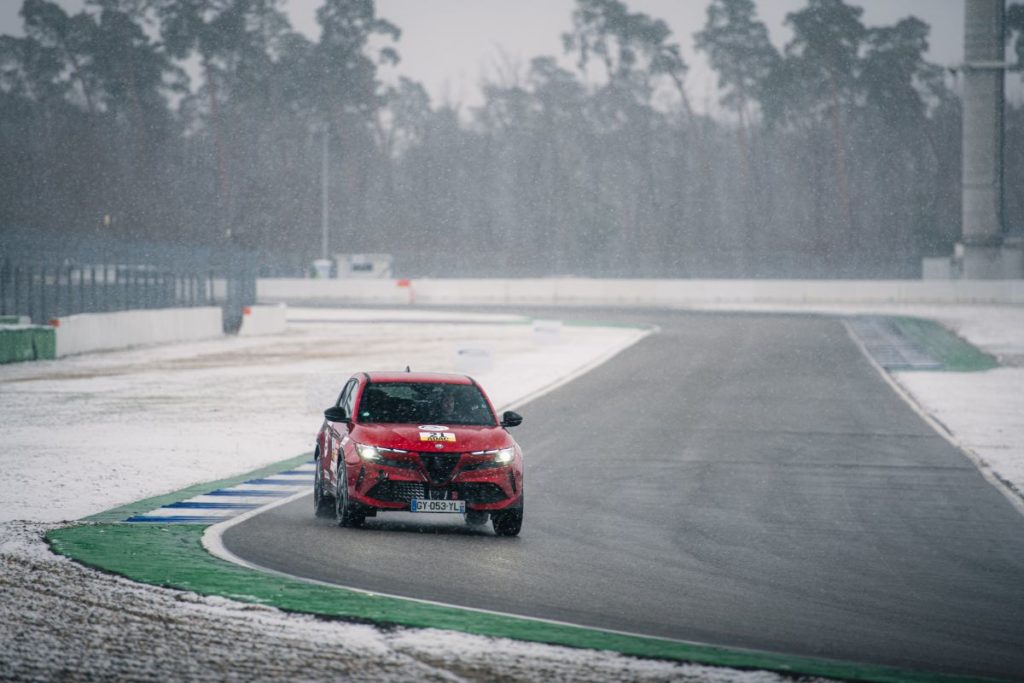
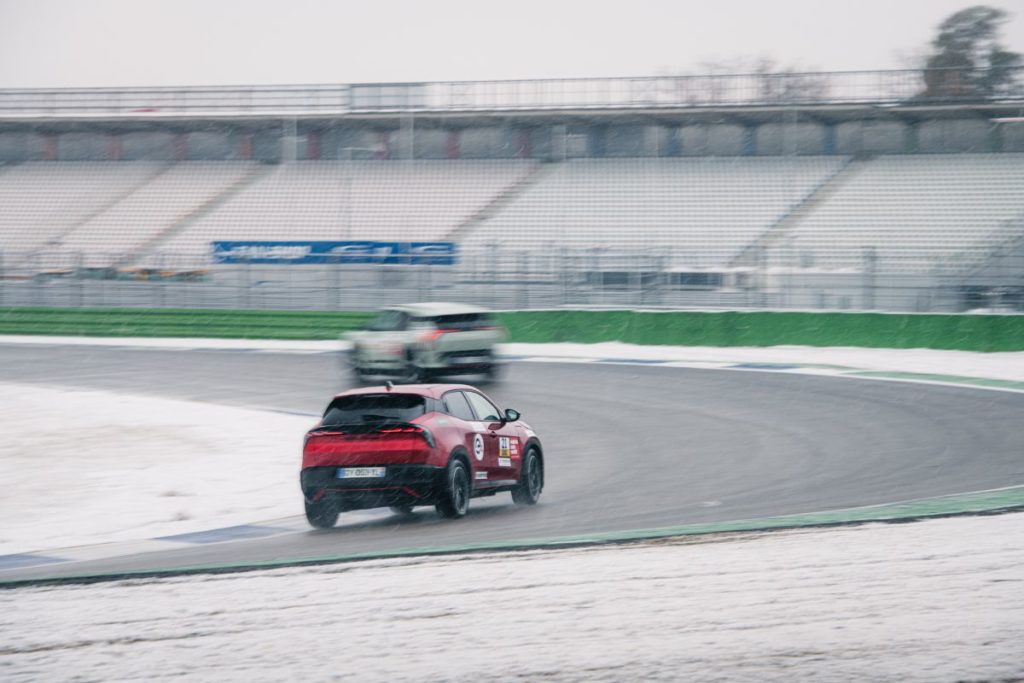
Everything goes smoothly, and my second relay will take place from 12pm to 2pm. In the middle of the day, I'm having a lot of fun on a track that's wet at first, but dries out as the laps go by. I'm constantly striving to set the fastest time, while keeping fuel consumption under control, and therefore braking as little as possible... The Alfa Romeo Junior never failed during the 24 hours.
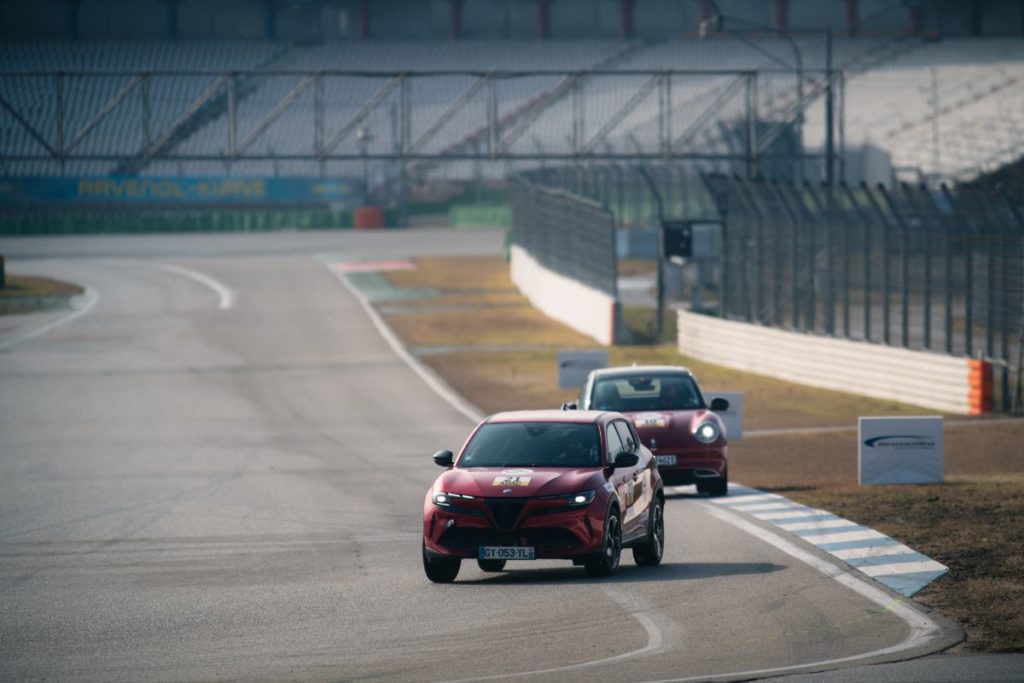
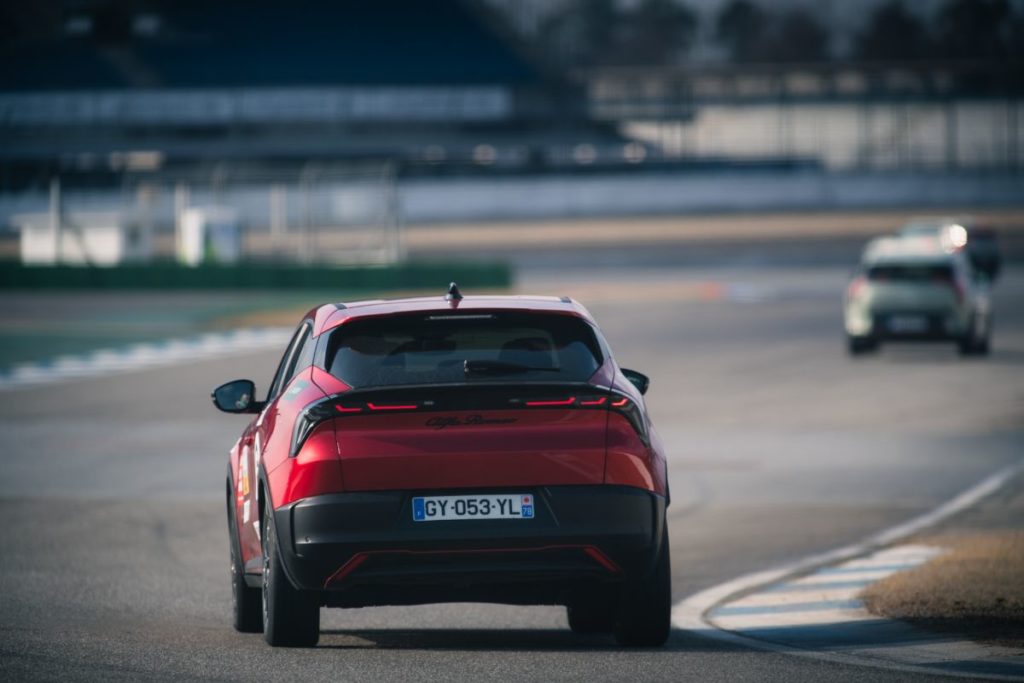
The chequered flag is waved at 4pm. In the overall standings, two Tesla Model 3s and a Hyundai Ioniq 6 were the winners, thanks, it has to be said, to their large batteries. After 24 hours of racing, Alfa Romeo Junior number 22 finished 55 km behind the leader, some twelve laps down. That's why there are different categories. In the Alfa Romeo Junior class, category B, we finished first and third (my car).
After analysis, The eight-minute penalty obviously didn't help, and driving a little slower to save battery power wasn't the best solution.
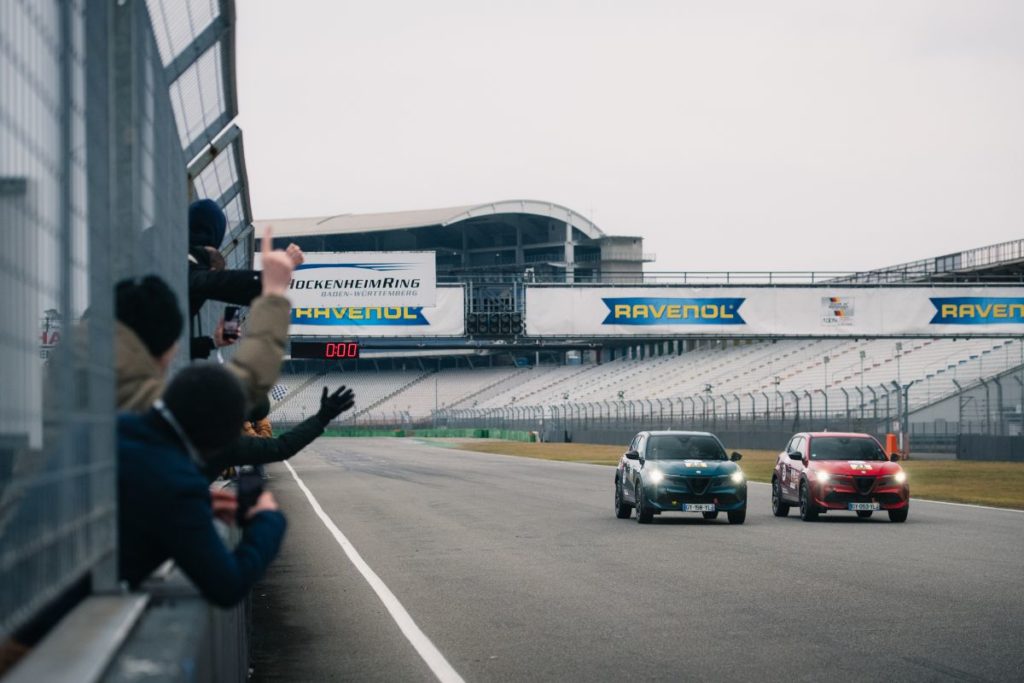
In the end, whether you like electric cars or not, this race was an exceptional moment. Driving on the Hockenheim circuit for 24 hours, day and night, with the vagaries of the weather (especially the snow), adjusting team strategy for each stint, managing fatigue... it's a unique experience.
The Alfa Romeo Junior proved impeccable during the 24 hours (and more).. I was a little apprehensive about the comfort of the Sabelt bucket seats, but I can testify that after all that time behind the wheel, I felt no pain whatsoever! All in all, the Alfa Romeo Junior covered almost 2,500 kilometers in a single weekend.
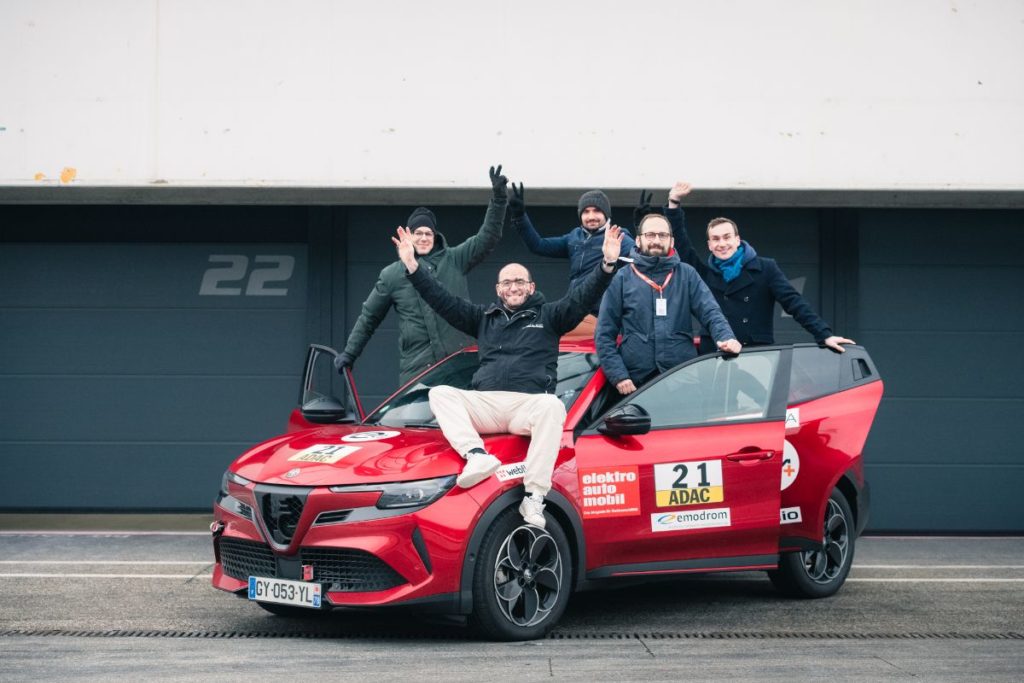
I'd like to thank Alfa Romeo France for the invitation, my team-mates Andy, Jean-Baptiste, Soufyane, Clément (car 21), Alexandre, Émilien and Artur (car 22), Yohann the photographer, and the entire ADAC e-competition organization for their warm welcome.
Hello,
Have you changed frames?
I thought you were going to take part with a Lancia Ypsilon?
Best regards.
Hello, good point... the two Lancia Ypsilon had a technical problem at the start, so plan B to do it with the Alfa.
Great experience! Bravo team! As someone who drives an electric car, I understand the excitement of these vehicles! Acceleration, roadholding, no overcorrections or undercorrections, it's another world of cars. You have to test it to see for yourself.
It seems Electric Car drivers have to utilise an on-board computer, with direct links to GIS to equate how long to recharge and also to possess information about all the charging stations.
Compared to Petrol/Diesel refilling - it's something else to have a headache about
Roll on the development of Hydrogen Cells, as soon as possible !